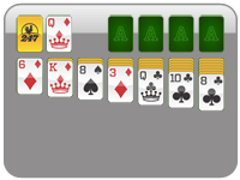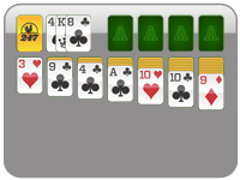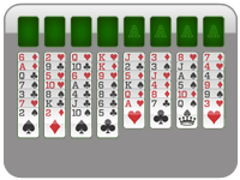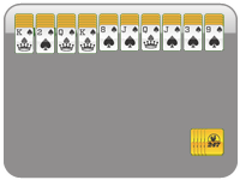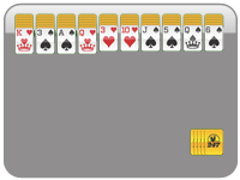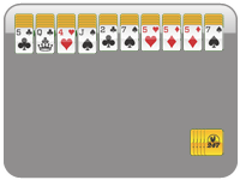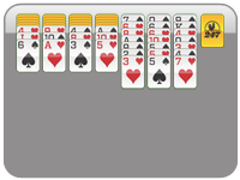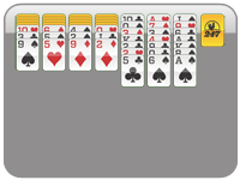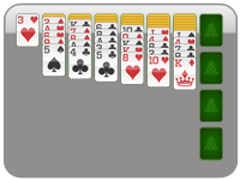What Are The Dimensions of Playing Cards?
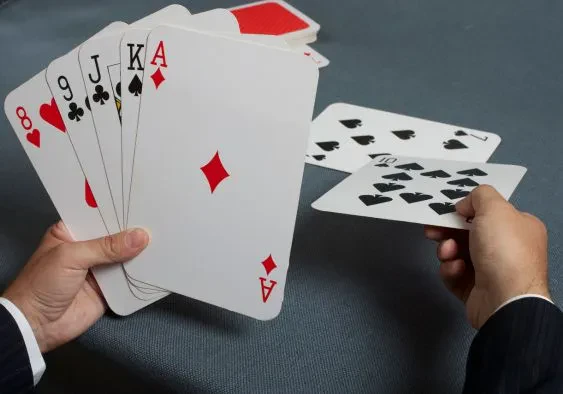
When you play a card game with friends, you probably don’t ask, ‘What are the dimensions of playing cards,’ but the length and width of a playing card is very intentional and dependent on their intended purpose.
In this blog, we will break down standard playing card dimensions, why sizes vary, and what you should know about the materials used and the thickness of the cards. Whether you’re designing, printing, collecting, or just curious about playing cards, size matters.
Are All Playing Cards the Same Size?
Many decks of playing cards follow similar dimensions, but all playing cards are not the same size. Various sizes are better for different games, player preferences, and purposes. The most widely used measurements in games like poker and blackjack is 2.5 inches by 3.5 inches, but there are also mini decks, jumbo decks, novelty-shaped decks, and cards that imitate the height of things like Tarot cards (2.75 x 4.75).
A person may want these different-sized decks for any number of reasons, but compact-sized decks like mini cards are especially popular for travelers or children who don’t want to take up too much space with a standard deck of cards. In contrast, bigger novelty cards like jumbo print cards are particularly handy for players with vision issues.
What are the standard dimensions of a playing card?
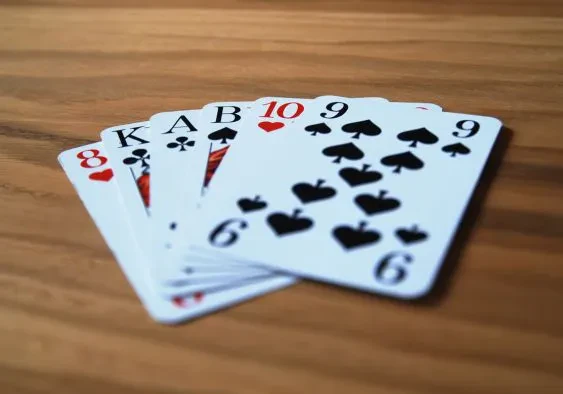
In the next section, we’ll discuss the standard dimensions of a playing card based on poker and bridge, the width of a playing card, and measurements in inches and millimeters.
Poker vs. Bridge: Two Standard Sizes
Two good examples of minute variation in dimensions of a playing card can be seen with poker-size cards vs. bridge-size cards. The standard playing card dimensions are 2.5 x 3.5 inches for the most popular American card games at home, like poker and solitaire. This is also the same size as most mass-market decks (like Bicycle) that you can buy.
However, bridge-size cards are a quarter-inch shorter to allow players to hold, shuffle, and deal the number of cards required in bridge (13) more easily. Their dimensions are 2.25 x 3.5 inches. Sometimes, bridge-size cards are also used in table games like Texas Hold’em for easier maneuverability.
How Wide Is a Playing Card?
As mentioned previously, the average size of a playing card for bridge and poker cards is the same, at 3.5 inches tall, but the width is the defining visual difference between the two types of cards. Because of the slimmer width with bridge cards, a player can more easily fan or hold cards in one hand. Some people choose bridge size solely for this reason, as they find it more comfortable.
Playing Card Dimensions in Inches vs. Millimeters
It’s also important to consider bridge and poker card dimensions in terms of millimeters and playing card dimensions in inches. In inches, poker cards are 2.5 x 3.5. In millimeters, that’s 63.5 x 88.9 mm. In inches, bridge cards are 2.25 x 3.5. In millimeters, that’s 57 x 89 mm. This is relevant as many card printers and international brands will defer to mm, which can make the accuracy of these measurements crucial when determining the size of a playing card.
How Thick Is a Playing Card?
The thickness of a standard playing card is about 0.2 mm (or 0.012 inches). Complete decks (52-54 cards) are typically around 17-18 mm thick, depending on the card's coating. The thickness of the playing card will affect feel, durability, and how smoothly cards shuffle or slide.
Materials and Finishes: Paper vs. Plastic Cards
These days, playing cards are usually made with two major materials: paper stock (usually with a plastic coating) and plastic/composite cards. For instance, the Bicycle deck, which is produced by the United States Playing Card Company, is made by sticking two sheets of paper together with black-colored glue between them. Other decks of cards are made of plastics like PVC (polyvinyl chloride).
There are benefits and drawbacks to using each of these materials. Paper stock decks are easier to shuffle and move around but are also more prone to creases, bends, tears, and liquids. Plastic decks last longer and resist bending, which makes them ideal for regular poker players. However, magicians and card sharks may prefer how paper cards feel and shuffle.
You can also get several finishes on cards, including air-cushion (a form of embossing) and smooth. The Air-cushion finish is the standard embossing process on Bicycle decks. It allows the cards to be fanned more easily. Smooth finishes have sleek, shiny surfaces that highlight the colors and artwork on the cards.
Regional Differences and Collectible Decks
We’ve talked mainly about playing cards in the US, but not all countries use poker or bridge size cards for their playing cards. Japan, for instance, uses a smaller, thicker deck of cards called a Hanafuda that has twelve suits with four cards in each suit. Germany also has their own narrower, taller version of playing cards with a 32 or 36 card deck with suits of Acorns, Leaves, Hearts, and Bells.
Outside of other countries, you will also often see collectors who will seek out special decks of cards with unusual sizes or with custom details, which may use premium materials or oversized dimensions. If you plan to buy a rare or international deck, make sure to check the card specifications.
Do card dimensions matter?

You may not have thought much about card dimensions before this, but now you know why it’s important to understand when to use each kind of card. You also know that the standard sizes of playing cards are poker and bridge-size, but specialty sizes exist and serve unique purposes.
Whether you prefer poker-sized cards or just love playing classic games, 247 Solitaire empowers you to enjoy smooth, free gameplay online - no measurements needed.
Solitaire Games
More Solitaire Games
More Games
Solitaire News
Disclaimer
DISCLAIMER: The games on this website are using PLAY (fake) money. No payouts will be awarded, there are no "winnings", as all games represented by 247 Games LLC are free to play. Play strictly for fun.

